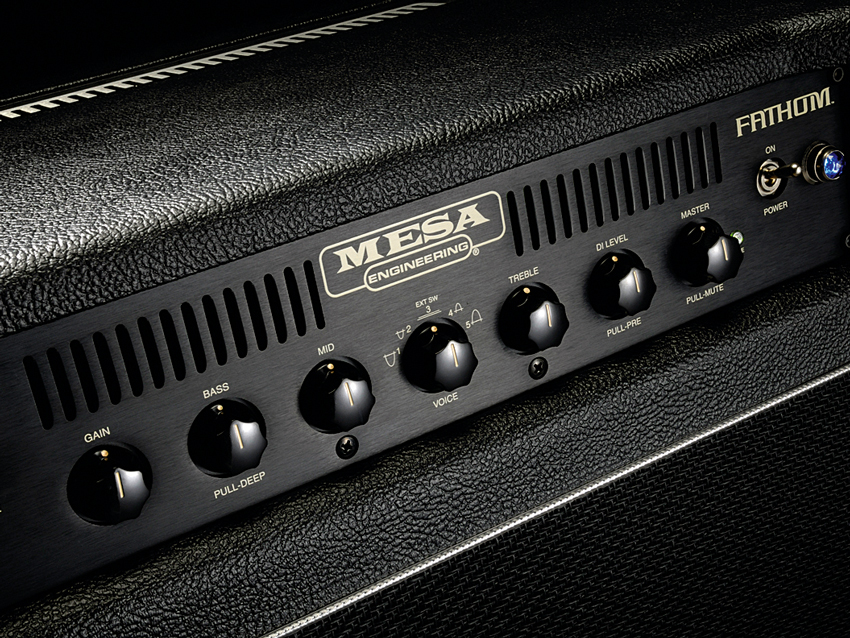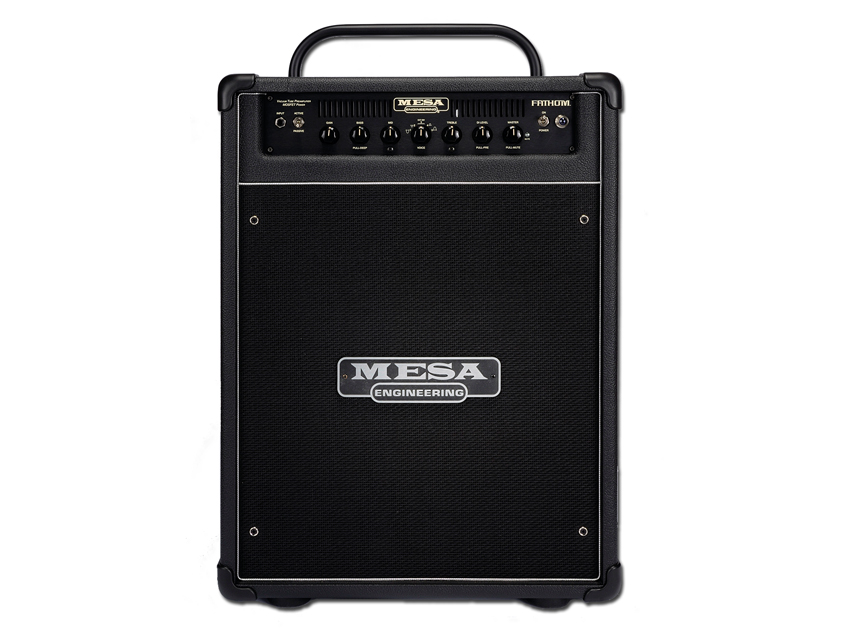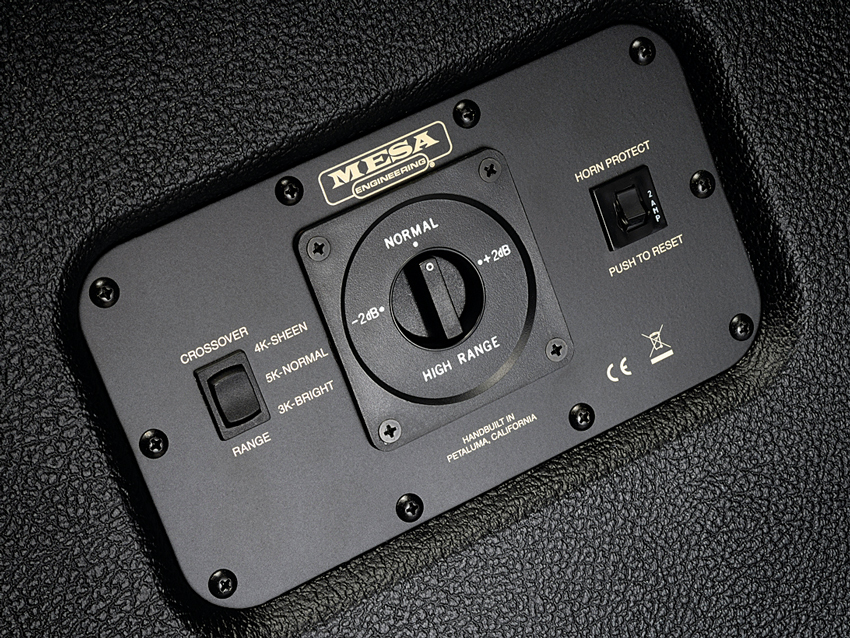MusicRadar Verdict
Not for the faint-hearted, but if you're serious about your amplification this has simply masses of appeal.
Pros
- +
It's tough, practical, loud and proud with exceptional tonal abilities.
Cons
- -
Bigger than the average 2 x 12 combo.
MusicRadar's got your back

Mesa Engineering M6 Carbine bass combo

Mesa Engineering M6 Carbine bass combo

Mesa Engineering M6 Carbine bass combo
While Mesa/Boogie has the reputation of providing 'stadium status' amplification, it is also appreciated for its design practicality. So while this new transportable bass combo is not aimed directly for use at mega venues, it is still extremely powerful and well conceived.
Finished in sturdy 'Black Bronco' covering with a stylish black jute grille, this is a triple-ported enclosure in Boogie's Tilt & Roll format. In other words, think of a substantial bass combo sitting on a sack barrow and you have the basic design concept as employed here.
Of course, Boogie has used this design feature before and proved its usefulness. Naturally it's all sturdily built and weighty, so any assistance in shifting it around has to be applauded. And there's no discernible vibration noise from the wheels or handle of this 'barrow' section. Loaded with a pair of 12-inch PowerHouse Neo 300 speakers and a horn this is all about quality tone and great delivery.
For the 'well informed' there may be an air of familiarity about all this and that's because it made a brief appearance as the 'Fathom' (and the instruction manual still carries that title) but unfortunately that name was already registered elsewhere so it's now known as the M6 Carbine. The specification remains entirely intact however.
In the past Boogie has been accused of over engineering its amplifier sections with too many options for the general player. However, since the magnificent M-Pulse model things have become much more straightforward. In fact the output section is the same as the M-Pulse, but the valve driven preamp and the driver section are all new.
The front panel is clean and logically set out from input gain, through the tonal section, DI level (with pre- and post-EQ ability) and the master volume, which includes a rather neat pull-mute ability.
At the rear things are just as practical with a pair of Speakon Universal connectors for speaker connection that handle both standard jack plugs and Neutrik locking plugs, while a micro-switch is supplied for selecting the correct speaker impedance.
Want all the hottest music and gear news, reviews, deals, features and more, direct to your inbox? Sign up here.
A group of five jack sockets provide a means of external activation of the voice function switches as well as mute. Any grounding footswitch connected to the desired voice pattern could do this, or the whole lot could be stored in a master external switching unit and selected at will.
The DI connection is of standard XLR type and comes with a ground-lift switch and with effects send and return jacks, a choice of bypass on this loop, and a tuner connection so all the essential ingredients for any working bass player.
As a further part of Boogie's 'Player Control Network' the rear of the speaker enclosure also has a setting panel for the horn. Not only is there a rotary attenuator to determine the degree of horn involvement but there's also a choice of three points in the crossover range and even a horn protect isolator that just needs a push to reset. If only all bass horns were fitted with this!
Sounds
With such a highly respected reputation you can approach this combo with an air of confidence. Think Boogie and you naturally combine high output with trouser-flapping projection, and true to form this does not disappoint.
With the usual high quality of build to the main enclosure you can feel safe in the knowledge that the whole speaker complement is able to handle whatever you want to throw at it. And that's just as well as the range of tones available is truly exceptional.
While the bass and treble controls are active, the basic mid control is passive for a more balanced overall sound, but with the voicing option you can select a more refined use of these mid tones for some spectacular results.
In fact the key element for selecting your preferred sounds is the impressive voice control. Surrounded by waveform diagrams it shows the graphic effect that each position produces, including a flat response. This is a very neat idea, instantly understandable and presenting four of the most popular tonal imprints for today's players.
It's centred on these mids and provides a dip at two different frequencies before the flat signal and a couple of boosts beyond. When set at flat this control allows the natural voice of your bass to shine through, but by simply advancing through the settings you will soon realise that one in particular has captured the very essence of what you personally desire from your instrument. All in all this provides a very efficient and quite impressive array of tonal abilities.
But, of course, there's even more. The bass control also has the pull-deep feature, which shifts the normally tightly focused bass response to a sub-bass area that just overflows with warmth and fullness. However, in this mode it simultaneously activates the extreme top end of the tonal range, so notes stay clear and defined.
This is a monster feature that any blue-blooded bass player will adore. It also demonstrates just how well this pairing of 12-inch speakers can perform. There's plenty of bottom-end but with that classic edge that 12-inch drivers deliver so well.
With the ability to select active or passive basses as well as an input gain control and a master volume you can achieve the optimum level of performance and overdrive for any make or type of bass. And with the added advantage of a DI control on the front panel you can also ensure that your preferred sound is sent into the PA for when you do get to play those stadium gigs!
Reliability is a key issue for any Mesa/Boogie design, and with their current high regard to design simplicity, ease of use and now with 'aviation style bracing' for an even more robust build, we are full of praise for this latest addition to the expanding bass range.
Like any of the major names in amplification there is a particular nuance in the sounds this produces, but the result here is a powerful and high quality delivery.
It may seem somewhat expensive in today's financial climate but it is all hand-built and well constructed and, when compared with the rest of Mesa's bass range it's actually very reasonably priced. And the truth is, with a cool 600 watts of pure Boogie tone waiting to be unleashed this bass combo has to be considered as something rather exceptional.